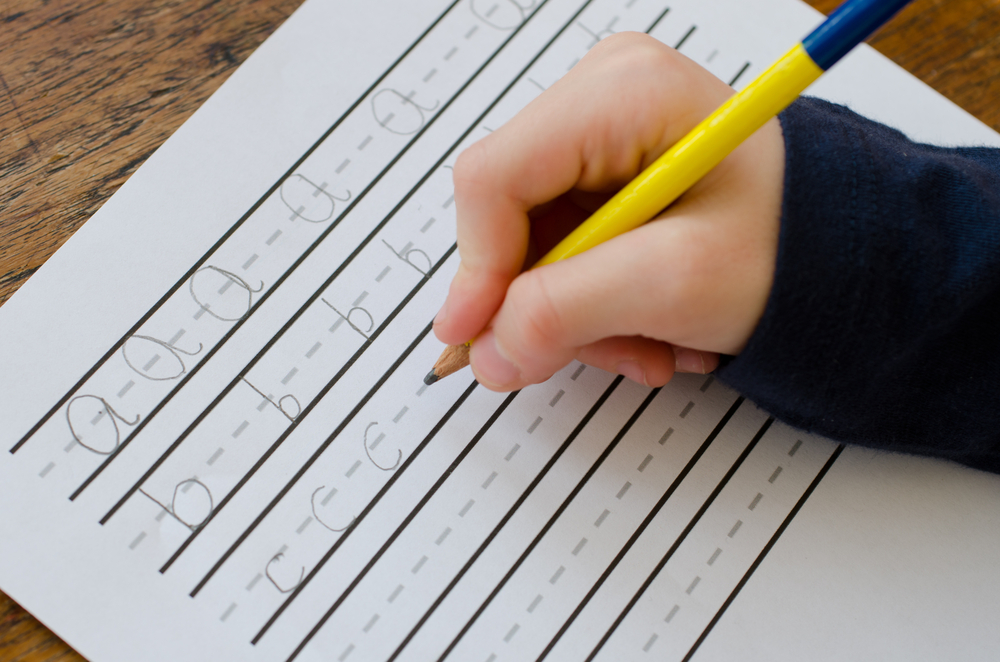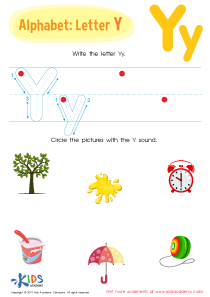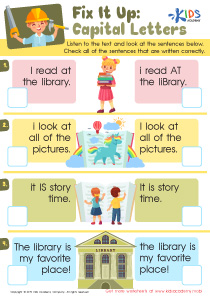Fine motor skills development Cursive Alphabet Worksheets for Ages 3-8
9 filtered results
-
From - To
Looking to enhance your child's fine motor skills while learning cursive? Our Fine Motor Skills Development Cursive Alphabet Worksheets for Ages 3-8 provide a perfect solution. Tailored for youngsters, these fun and engaging worksheets help children master the art of cursive writing, all while developing essential fine motor abilities. Each sheet focuses on individual letters, allowing children to practice and perfect their strokes. Ideal for both classroom and at-home learning, these worksheets make cursive handwriting an enjoyable experience and pave the way for clear and elegant penmanship. Let your child discover the joys of writing with our expertly designed cursive worksheets.
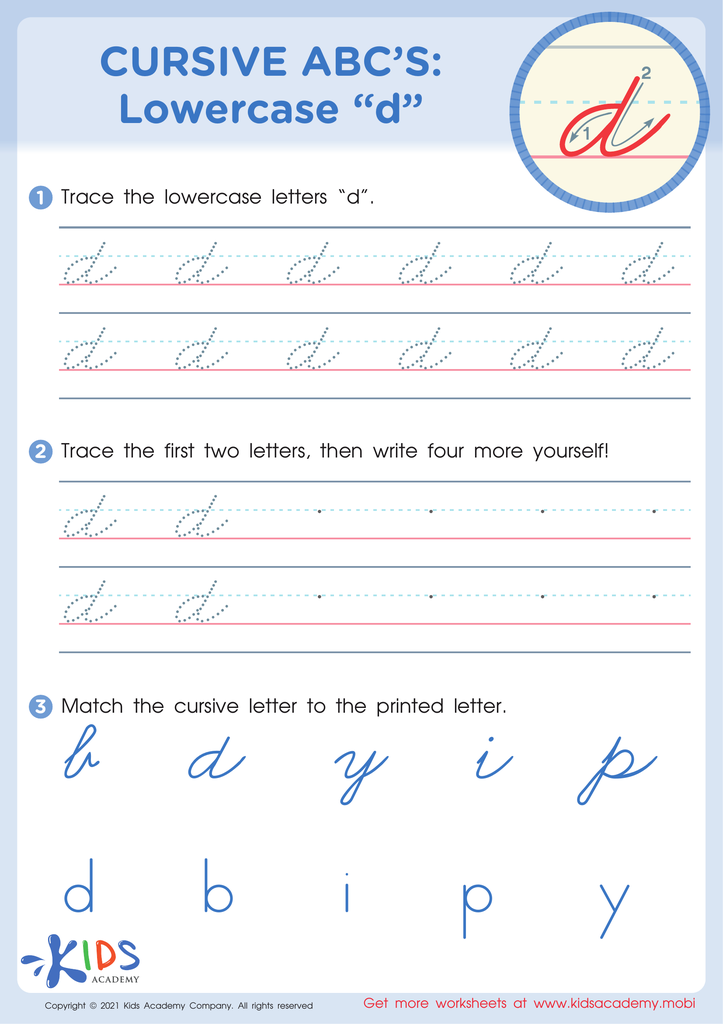

Cursive ABCs: Lowercase d
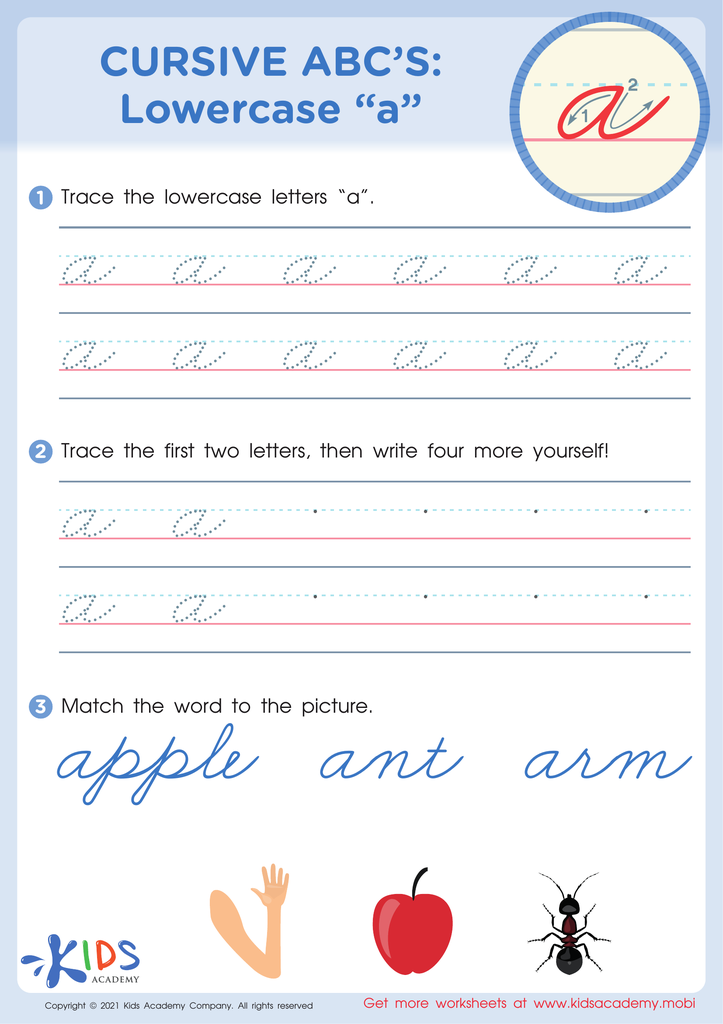

Cursive ABCs: Lowercase a
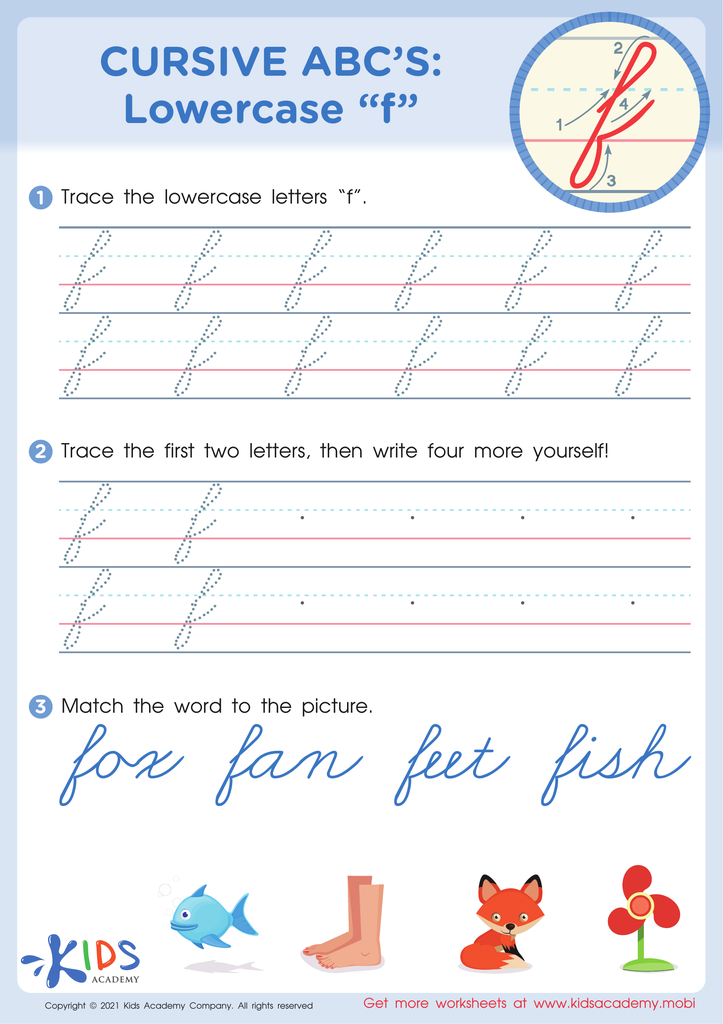

Cursive ABCs: Lowercase f
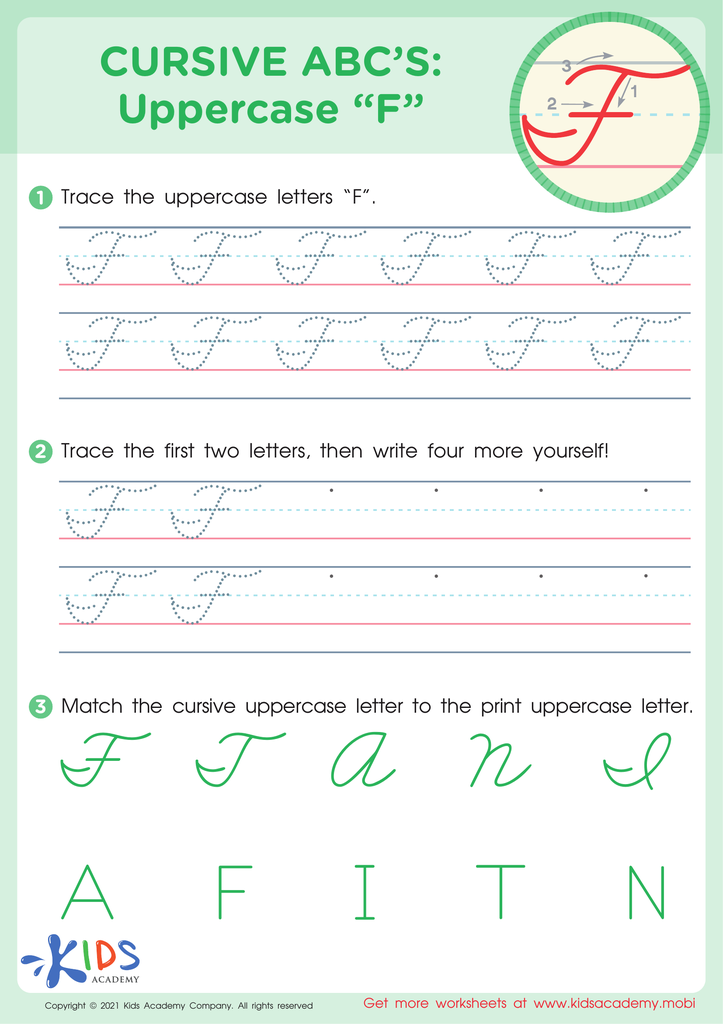

Cursive ABCs: Uppercase F


Cursive ABCs: Uppercase G
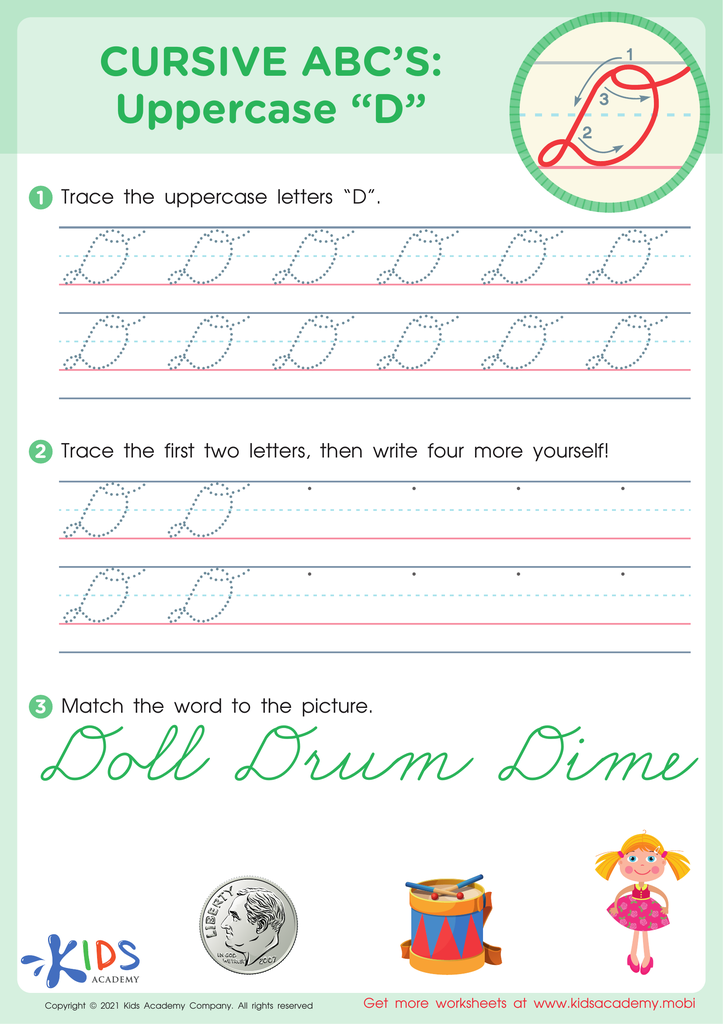

Cursive ABCs: Uppercase D
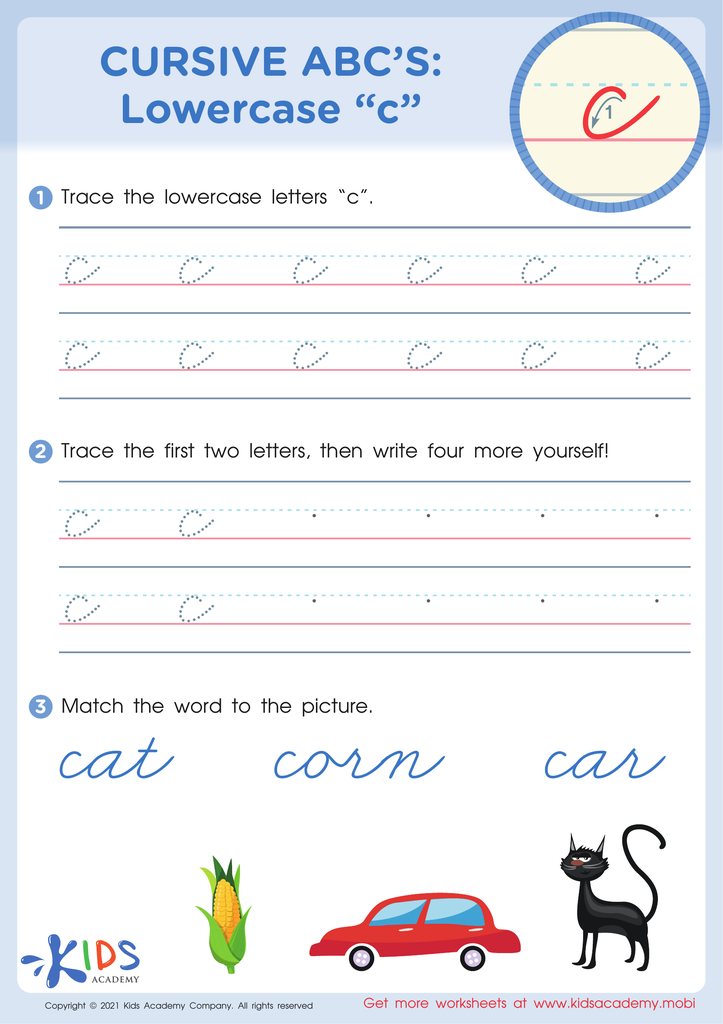

Cursive ABCs: Lowercase c
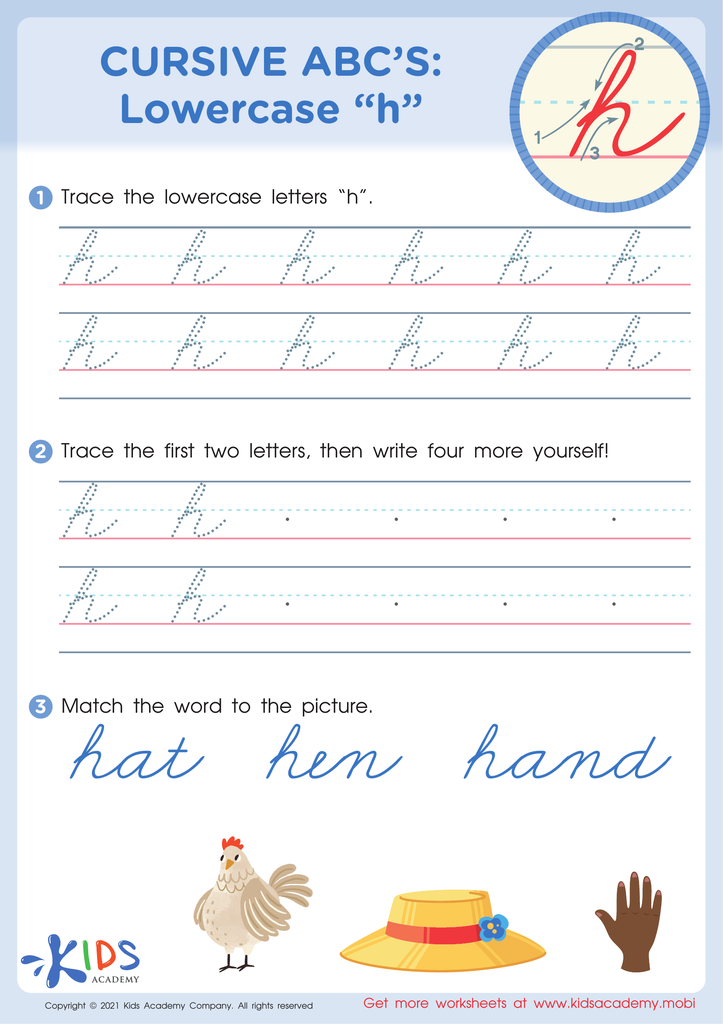

Cursive ABCs: Lowercase h
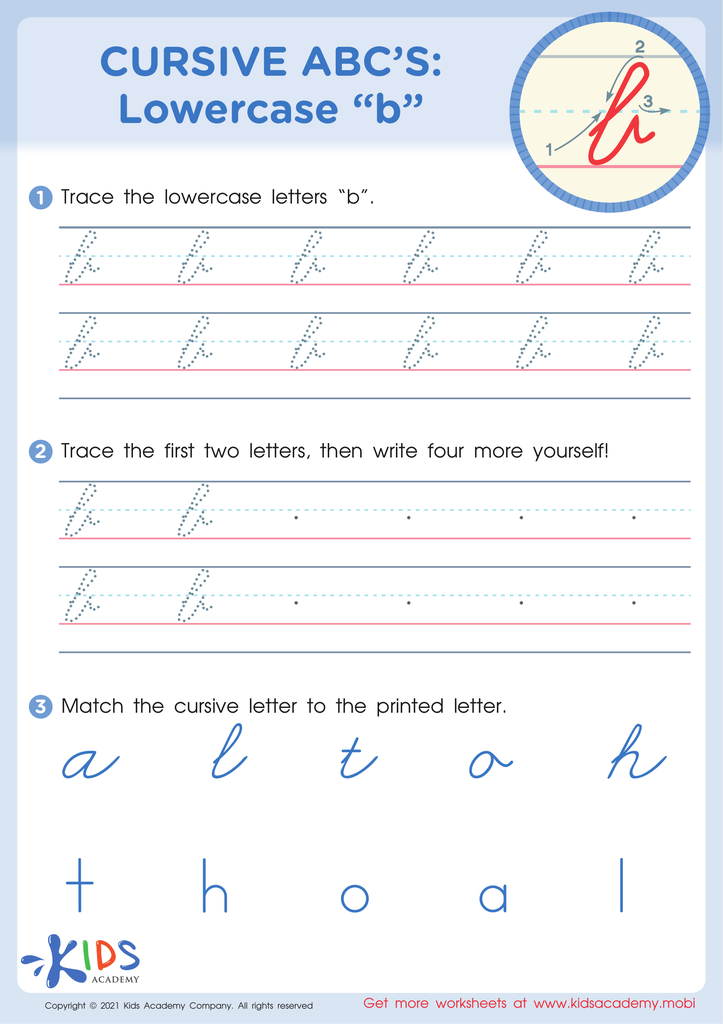

Cursive ABCs: Lowercase b
Fine motor skills development in early childhood, particularly through activities like learning the cursive alphabet, is essential for several key reasons. Firstly, fine motor skills involve the coordination of small muscles in the hands and fingers, which are crucial for performing everyday tasks such as writing, buttoning clothes, and tying shoelaces. Engaging in activities that promote these skills can enhance a child's hand-eye coordination, dexterity, and precision.
When children practice writing the cursive alphabet, they engage in repetitive, smooth, and flowing motions that strengthen their hand muscles and improve their overall motor control. This fosters a greater sense of coordination and an ability to manage complex hand movements better as they grow.
Additionally, learning cursive writing has cognitive benefits. It encourages the brain to integrate visual and tactile information, aiding memory retention and understanding of the written language. This holistic engagement can improve a child's capacity for learning in all subjects.
Moreover, children often experience a boost in self-esteem and confidence as they master fine motor tasks and cursive writing. Success in these areas offers a sense of achievement, fostering a positive attitude towards learning and perseverance.
Parents and teachers should prioritize these developmental activities to ensure that children build a sturdy foundation for academic and everyday skills critical for their future success.






